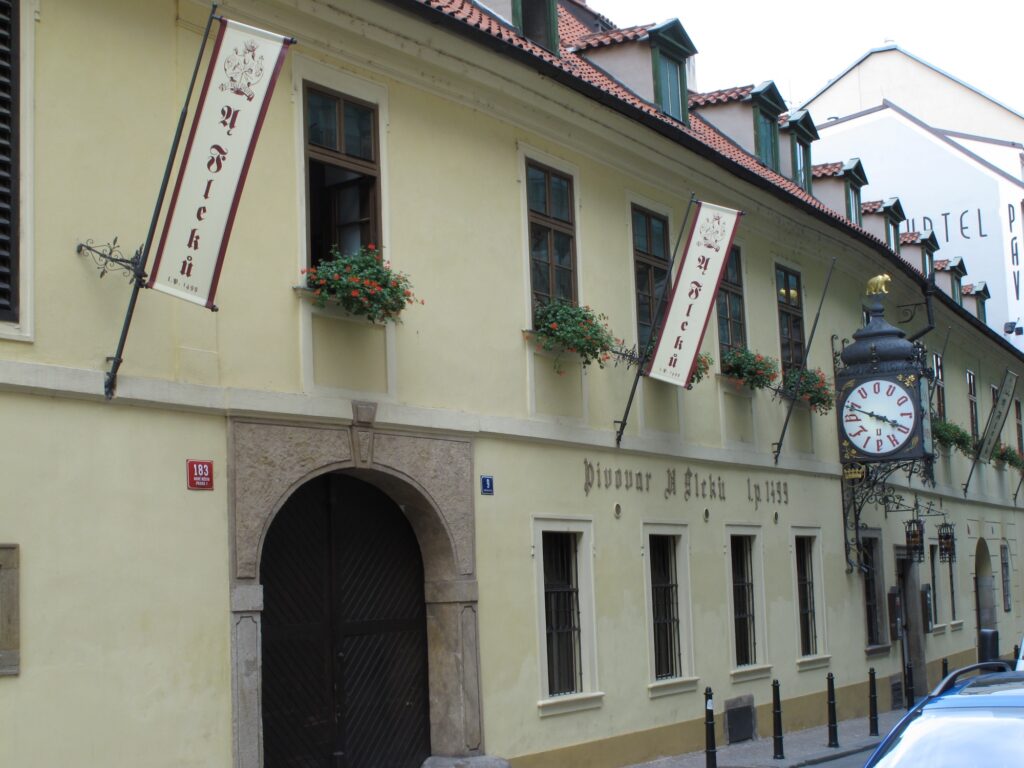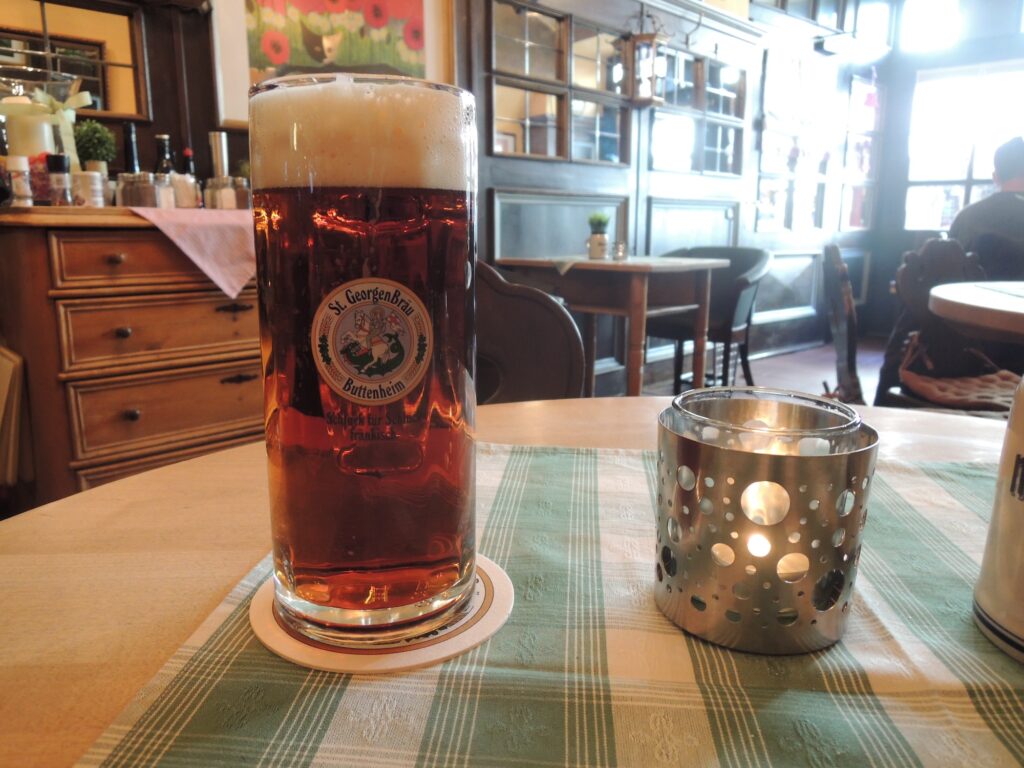
(photos and text by professor Mark Meli)
In Japan, all of the major industrial breweries produce a dark lager. It usually isn’t clear, however, what style of beer these are. Some have been called stouts but use lager yeast. Some have been branded using the English word black, but most have been labelled kuro. Kuro biiru has thus become a kind of catch-all term in Japanese for any dark beer. In the minds of many drinkers, stout is kuro biiru, as is porter, as is any kind of dark lager. But of course it’s much more complicated–and interesting–than that. In Central Europe, there are three major traditions of dark lager brewing: the schwarz of Thuringia in Eastern Germany, the dunkel of Bavaria in Southern Germany, and the tmavý / černé of Bohemia in the Czech Republic. These differ in clear ways one from another, and each tradition has influenced craft brewers around the world, including in Japan.
Schwarz means black in German, so the Japanese kuro biiru is simply a translation of schwarzbier. As schwarz is a style from Thuringia in the former East Germany, during the communist era it suffered in its homeland while being nearly forgotten in the West. Schwarzbier really is black, usually with a tall, off-white head. It uses a large amount of roasted malts, so this character is prevalent, much like in an Irish stout. In fact, we can think of schwarz as the lager equivalent of a dry stout. It will have bitter coffee-like notes, and only a small amount of sweetness, usually a touch of dark chocolate. Fermentation and lagering at low temperatures will mean that there will be little fruitiness to be found, and a schwarz will finish dry, with roasted malts and a slight hop bitterness. Hop aromas will be low to non-existent. The most famous example is probably Köstritzer, which is readily available bottled in Japan but almost never found in good condition (expect cardboard notes from age and oxidation to go with your coffee!). You would be much better off trying one of the many fine examples made in Japan. Yebisu Premium Black, though made industrially on a large scale, is a good place to start, especially on draught.

Several craft schwarzbier are even better. Baeren Schwarz is thick and creamy, with lots of dark chocolate and coffee and is preferred unpasteurized on tap. Harvest Moon Schwarz is very roasty, with a coffee-like aroma. The flavor is like café au lait, roasty yet creamy, with light berry and chocolate notes. There is some sweetness, but it finishes dry and roasty, with a subtle, peppery hop bitterness. Coedo Shikkoku has a roasted and slightly smoky aroma. There is a touch of creamy sweetness in the flavor, balanced by light roast and hop bitterness. Tazawako Dark Lager has a bready malt aroma of dark chocolate. It is filling but not sweet, with a dry, lightly roasted finish. Akashi Brewery’s Yukyu no Toki is also an excellent, balanced schwarzbier that is somewhat hard to find outside of Hyogo Prefecture but worth seeking out. The same can be said for Otaru Schwarz, a summer seasonal that you will work hard to find outside of Hokkaido. Speaking of Hokkaido, Hop Kotan has made at least two very nice traditional schwarz beers and a number of Cascadian dark lagers–a schwarz using lots of new world hops. Any black lager from them is worth a try. Schwarzbier is a style that many Japanese brewers do well, and there are a number of others besides the above that are also worth trying.
Dunkel is German for dark, and these beers are usually medium amber to deep brown in color, but never black. They are the original style of Munich–the Münchner Dunkel was popular in the city and surrounding areas long before pale malt for helles (the lager of Bavaria, most popular around Munich–see JBT42 Beer Styles) could even be made. In fact, this beer is a showcase for Munich malt–dark and bready, rich but light, with flavors of bread or toast and often nuts, caramel and chocolate. A dunkel should never be roasted or taste like coffee, and is usually not fruity either. Hop character is very low. This is liquid bread, rich and satisfying, but difficult to master. Many dunkels, even in Bavaria, are too sweet and become cloying. A good one should never be overly sweet. It should be something that you do not tire of even after a full liter goes down.
German imports that can be found in decent condition in Japan include Weltenburger Kloster Barock Dunkel and Plank Export Dunkel. The former is usually seen in bottles but the latter should be tried on tap. Ayinger Altbairisch Dunkel makes a rare appearance at festivals and is excellent. From Japan, Otaru Dunkel is a classic example. It is deep amber in color, with bready malts and notes of caramel and toast. It is rich but not sweet, finishing clean and dry and making you long for another. Doppo Dunkel from Okayama is nutty with rich caramel notes but also avoids being too sweet. There are a few other Japanese breweries that make a dunkel, but overall it is not a very popular style here.
As an aside, some of the best dunkel in Germany is found north of Munich in Franconia. They tend to have rich and complex cereal malts and to be hopped slightly more aggressively than southern versions. You will have to go to Franconia to try the dunkel from Held, Gradl, Rossdorfer or Göller, but you definitely should. Also popular in Franconia is unfiltered dunkles landbier, which has a bit more estery fruitiness on account of the yeast. The versions from Knoblach, St. Georgen Bräu and Roppelt are particularly excellent. So is the world classic Kneitinger Dunkel from Regensburg, Bavaria.
Bohemia in the Czech Republic has its own dark lagers that are completely different from the German styles. The names are similar: tmavý means dark and černé means black, but unlike the situation with dunkel and schwarz, in Bohemia there is no consistent distinction between the two. Instead, what we find is a range of flavors stretching from sweet, creamy chocolate to dry, roasty coffee. Generally, Czech dark lagers are dark brown to black in color. They may possess caramel flavors but more usually are rich in notes of dark chocolate, coffee, and cream. Also possible are flavors of toast, nuts, and dark fruit. They tend to be hopped more strongly than German darks, richer in malt, and will also often include a hint (or more) of diacetyl. With the right amount, this buttery flavor adds to the rich malt notes, giving an experience resembling buttered dark rye bread. It is not seen as an off-flavor unless it overwhelms the malts.

The king of Czech dark lagers is the one from U Fleků brewpub in Prague, which they claim has been made there since 1499. It is sweet and creamy, with notes of dark chocolate, cream, cola, and berries, and finishes dry, with hints of coffee. This is a must for any visitor to Prague, but it must be said that it can be inconsistent, and is not clearly the best tmavý in the capital. Bernard Černé on tap is probably better, although the bottles now easily found in Japan are disappointing. These of course should be tried, but they tend to be badly aged and oxidized. Matuška Tmavý is also a fine example, very chocolaty and fruity, with flavors of raisins, plums, and berries. If you are lucky, you just might find it at a festival here.
In Japan, Nihonkai Club Dark Lager is an authentic Czech tmavý. It is shiny black, with a nose of bread and dark chocolate. It is malty, creamy and filling, yet not particularly sweet. Limited versions using orange and coriander or Sorachi Ace hops have also been quite remarkable. The former brewer of this, Jiří Kotýnek, is now brewing at Kobo in Toyama, and we hope to see a dark lager coming from there in the future. Another Czech-style Japanese dark lager is Yokohama Bay Brewing’s Bay Dark. It is dark brown with a pretty tan head, and malty flavors of dark chocolate, toasted black bread, coffee, and a touch of berries. It is rich but dry and surprisingly light and crisp.
Traditional European dark lagers are not as flashy as barrel-aged imperial stouts or their coffee, chocolate, and vanilla-infused pastry stout brethren, and thus they garner far less attention in the craft beer world. These are subtle dark beers that are meant to refresh and sustain, not necessarily to wow. Done well, however, they present rich malt flavors that are delicate and delicious. They go well with various kinds of food, and are beers that demand a full-sized pour. Many Japanese craft brewers have mastered these styles, so why not grab a few for an autumn tasting? They are perfect in cool weather.

All Beer Styles articles are written by Mark Meli, author of Craft Beer in Japan.
This article was published in Japan Beer Times # () and is among the limited content available online. Order your copy through our online shop or download the digital version from the iTunes store to access the full contents of this issue.



